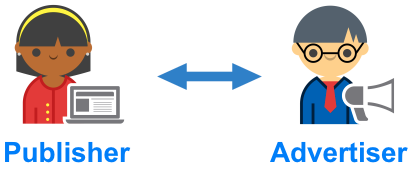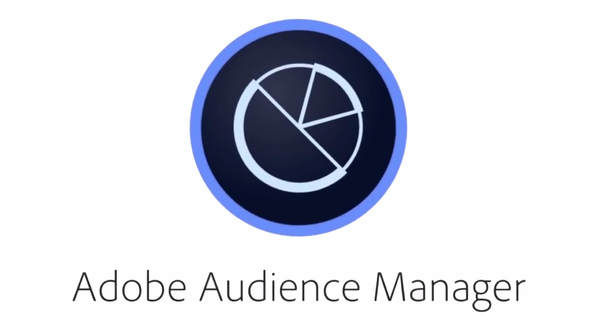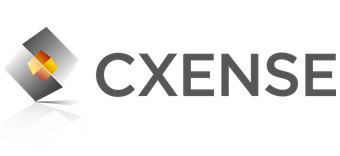What's a Data Management Platform (DMP)
A DMP (Data Management Platform) is a SaaS platform for marketeers where on- and offline data is gathered, linked, and exposed in an actionable way for advertising. It's a platform that manages the segmentation and identity definition of identified and anonymous users to then provide actionable, targetable audiences towards various advertising execution channels where one engages with a consumer (e.g. Facebook, Programmatic, Google Ads, etc.).
A DMP is different than a CDP because it focuses more on Advertising and thus anonymous online visitors rather than known visitors. Use a DMP when you want to optimize your advertising spend and use a CDP to optimize your broader lead and customer personalization cross-channel.
What does a DMP do
A DMP has various roles to play in an organization depending on the type of organization (publisher or advertiser) and its activities. We see 4 important roles of any DMP.
(1) Orchestrating target audiences across channels
If you think about it: most marketeers have custom-built audiences in their Facebook Advertising account, their Google Ads (previously called Google Adwords), their Marketing Automation platform, and their Media buying tool. However, typically, it's the same customer receiving those messages across various channels. No solution orchestrates the target audiences and guarantees that the same target audiences are used by all execution channels. That is the first role of a DMP.
(2) Smart retargeting
We all know retargeting pixels: one click makes a visitor enter a target audience, now used for reminding that user of a given product. Retargeting pixels, however, don't offer any finetuning or advanced selection. Maybe you want to only retarget visitors if they aren't frequent visitors of your site or you only want to remind your male customers when they abandon their basket.
A DMP offers the ability to, with all flexibility, do smart retargeting and use advanced rules in building targeting audiences taking into account the user's profile and his/her previous on- and offline purchases or visits.
(3) Suppression of online advertising when an (offline) purchase is made
There is no relevance in bannering a product a customer already bought. Most organizations however don't manage to successfully suppress their online advertisement when a purchase is made; especially when it's made offline.
A DMP can do such suppression in real-time and thus typically brings a direct Return On Investment (ROI). Using suppression prevents irrelevant ad spend and typically results in an ROI return of 3 to 5% of total advertising spend.
(4) Suppression of online advertising across channels
Most marketeers leverage Facebook, Adwords, and Paid Media Display to get their messages to users. However, there is similarly no value in bannering one user over and over again, yet most marketeers can only control capping per channel.
A DMP offers the ability for cross-channel capping and can prevent any user sees one given ad 5 times across all channels. This functionality typically brings direct ROI for an advertiser as it prevents again irrelevant ad spend.
What types of DMPs exist
A DMP is typically at the heart of a marketing or publisher organization.
All DMPs have the same basic functionalities yet no DMPs have the same functionalities.
The first relevant split to make is a Publisher DMP vs. an Advertiser DMP.
- a Publisher DMP is typically focused on helping publishers to slice and dice their visitors in audiences the publisher can sell in its advertising, being it direct or programmatic.
The focus lies typically on:- integration with Adtech tools such as Supply Side Platforms (SSPs) and Adservers
- integration with Third-Party data platforms to sell/buy data from
- integration with Single-Sign-on tools
- an Advertiser DMP is typically focused on supporting advertisers in getting their target audiences to all their execution channels and monitoring audiences along the campaigns.
The focus lies typically on:- integration with Marketing execution tools such as Facebook, Google Ads, Demand Side Platforms (DSPs)
- integration with Marketing Automation platforms and CRM systems
- ability to track ad impressions

A second relevant split is pure DMP vs. a platform with some DMP functionalities
- Pure DMPs are platforms such as Adobe Audience Manager, Cxense DMP, and Salesforce DMP.
These dedicated platforms typically give a marketeer or publisher a solid set of functionalities allowing the above-described use cases. These platforms, however, do have a license cost specifically for the DMP functionalities. All of these platforms are standalone and it is thus in essence perfectly possible to have a DMP of one vendor & a marketing/ad stack from another vendor.
- Platforms with DMP functionalities such as Google 360 or Tealium Audiencestream are platforms that offer for free or at an additional cost DMP functionalities as part of another product.
- Google Analytics has DMP functionalities as it allows marketeers to upload 1st party information and push GA audiences to its Google Ad Manager buying platform. Google Analytics, however, doesn't allow to push to other channels such as Facebook nor does it enable capping across all channels.
- Tealium Audiencestream is a paid product as an extension of Tealium Tag Manager.
- Most Demand Side Platforms (DSPs) have some DMP functionalities by allowing basic Audience definitions based on their pixel. It is, however, rarely linked with 1st party nor allows to leverage these same audiences in other channels.
How to get started
Choosing and implementing a DMP isn't rocket science, yet it needs to be done knowing your data-driven marketing strategy and the techniques behind it. Too often organizations choose and implement a DMP without truly knowing how they will use it and create ROI.
We recommend to take the following steps to deliver a successful DMP project:
- Understand your context. Do you need a DMP in the first place? If you have e-commerce activities and/or combined on- and offline activities you likely will.
- Define your use cases in detail: what audiences would you want to build and leverage? What execution channels do you use and who owns them (agency or internal)?
- Build your business case: how much could you save through suppression across channels or combining on- and offline? How much better could you target and thus spend your budget?
- Choose your DMP platform: evaluate the functionalities you need vs. the functionalities every platform offers. Try to look beyond the sales pitch to evaluate if this platform can truly enable your use cases.
- Technically implement your DMP platform and make sure you track what you need and connect to all your execution channels.
- Deliver use cases 1 by 1: no DMP trajectory ends at technical implementation. Once implemented, your DMP Coach needs to work with marketeers to set up and deliver the use cases one by one.
Our expertise
element61 has done various DMP RFPs, is a partner to multiple DMP platforms, and has managed various DMP implementations. We understand DMPs in-depth and understand their potential. It is our mission to help organizations along every step.
Our consultants are experienced in all major DMPs. We are a trusted implementation partner of the below DMPs:


Contact Peter Depypere or Bart Van Der Vurst for more info